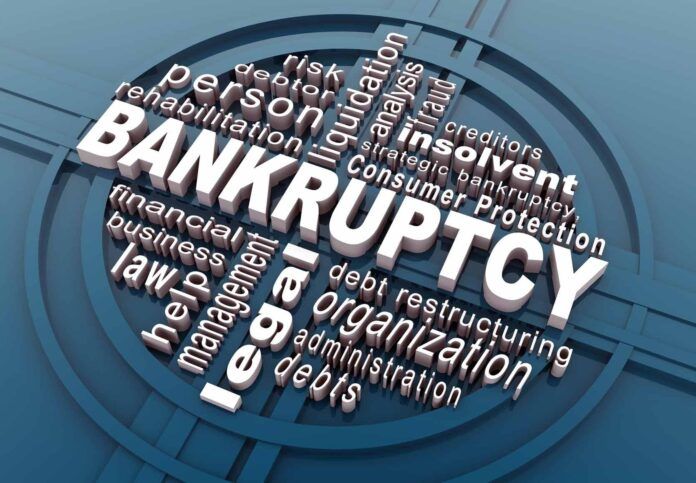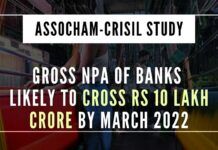
The Narendra Modi government brought in the IBC last year to expedite debt resolution
Insolvency & Bankruptcy Board of India (IBBI) Chairman M.S. Sahoo is gung-ho about the new Insolvency & Bankruptcy Code (IBC), calling it the “biggest” economic reform in recent years. The truth is that it can be the biggest economic reform but this would be contingent upon simultaneous reforms elsewhere, especially in the legal system.
If India is indeed the world’s fastest-growing big economy, as its government once again claimed this week, no one told its bankers and business leaders
The Narendra Modi government brought in the IBC last year to expedite debt resolution. The earlier regime of Debt Recovery Tribunals and civil courts took a lot of time. This led to what has been called the ‘twin balance sheet problem:’ sinking, hugely debt-ridden corporations taking down their lenders with themselves; the balance sheets of the company as well as the bank getting murky.
This has led to an awkward situation. As Economist wrote in May, “If India is indeed the world’s fastest-growing big economy, as its government once again claimed this week, no one told its bankers and business leaders. In a nation of 1.3 billion steadily growing at around 7 per cent a year, the mood in corner offices ought to be jubilant. Instead, firms are busy cutting back investment as if mired in recession. Bank lending to industry, growth in which once reached 30 per cent a year, is shrinking for the first time in over two decades.”
The IBC can potentially help the economy break this vicious circle and energize the economy. Work has started. ABG Shipyard Ltd is the recent one to join the list of big defaulters to face insolvency proceedings being initiated by ICICI Bank at the Ahmedabad bench of National Company Law Tribunal (NCLT). The company owes over Rs 10,000 crore to ICICI.
Action against ABG is part of the follow-up of the pronouncement by the Reserve Bank of India (RBI) against 12 large defaulters. In June, the RBI had picked up 12 companies which had Rs 5,000 crore worth of debt exposure, 60 per cent of which had been termed bad by the lenders. Steel and infrastructure firms dominated the list of corporations on which the IBC was applied, their combined outstanding debt in excess of Rs 2 lakh crore.
The indebted companies—many of which got loans from public sector banks because of political connections in the first place—will also take the legal recourse
As per the new insolvency regime, control of the debtor firm goes from the shareholders and promoters to a Committee of Creditors, which gets 180 days (extendable by another 90 days with NCLT approval) to evaluate the restructuring proposals. The failure of restructuring would result in liquidation.
Unsurprisingly, the affected promoters are not happy. They are reportedly raising various concerns. They seem to be unhappy with the procedures adopted to appoint interim resolution professional (IRP). Some of these firms have also approached the Securities & Exchange Board of India (Sebi) and other authorities ostensibly asking for clarity on technical issues like insider trading and the takeover code. The idea seems to delay, and if possible, derail the IBC-oriented procedures.
The indebted companies—many of which got loans from public sector banks because of political connections in the first place—will also take the legal recourse. Indian courts are notorious for delays, so the defaulters are likely to seek solace in the ingrained fault in the system.
Thankfully, the early signals are not very encouraging for the dirty dozen. About a fortnight ago, the Gujarat High Court dismissed Essar Steel’s case. While the NCLT, Ahmedabad, has admitted Essar Steel case, State Bank of India has suggested Satish Kumar Gupta, of Alvarez and Marsal India as IRP.
Essar Steel has to pay over Rs 45,000 crore to its lenders; more than of this sum has been categorized as non-performing. SBI leads the consortium of 22 creditors.
It is not just the Gujarat High Court that has boosted the new insolvency regime. Supreme Court judge A.K. Sikri also sees the IBC as a “wonderful document.” Speaking at a function organized by the IBBI and Ficci last week, he emphasized that the Code is important for the country’s economy.
This, however, doesn’t mean that there is any scope for complacency for the government. Judicial reforms are the need of the hour—and not just for addressing the issue of corporate default.
Note:
1. The views expressed here are those of the author and do not necessarily represent or reflect the views of PGurus.
- Liberty Is Penalized, Violence Goes Untouched - December 21, 2019
- Rahul’s Howdy bloomer - September 22, 2019
- Chidambaram’s hypocrisy - August 22, 2019










